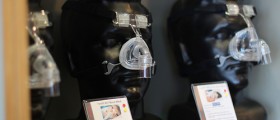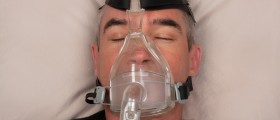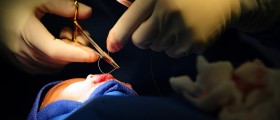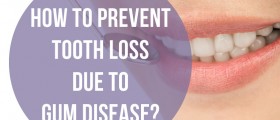
The gag reflex can grow very consistent and frequent, and you might find yourself gagging even when you engage in tasks that shouldn't ordinarily trigger it — when you perform oral sex or brush your teeth, for instance. The condition can be pretty annoying, and you may even be worried there is something seriously wrong with you. If you are having trouble with an overactive gag reflex, the following text may have some answers for you.
The gag reflex is there to prevent you from choking
The level of gag reflex sensitivity varies significantly from one person to the next, making you quite unique. For instance, some people may induce a gag reflex just by touching the soft palate with a toothbrush, while others require more intensive stimulation of the area to initiate the reflex. (Not that we suggest you try this for fun!)
Certain individuals, like sword swallowers, have managed to suppress their gag reflex with continuous practice, and are able to control it. This reflex may be also misused by bulimics who are prone to vomiting to cancel out the effects of overeating, and actually induce this process by stimulating a gag reflex first.
Can gastritis be the cause of an overactive gag reflex?
Gastritis, or an inflammation of the lining of the stomach, is an acute or chronic illness caused by various factors and underlying conditions.
The most common culprit of gastritis is a bacterial infection caused by Helicobacter pylori. The infection may also be caused by a virus, a fungus, or even a parasite. Other causes of gastritis include long-term use of non-steroid anti-inflammatory drugs, such as ibuprofen, excessive consumption of alcohol, coffee, cigarettes, autoimmune diseases and systemic diseases (AIDS, Crohn’s disease, sarcoidosis).
What can be done if you have a hyperactive gag reflex?
There are ways to reduce the intensity of the gag reflex and try to control it, which may be beneficial for individuals in whom the gag reflex is triggered easily.
Exercising is one way to deal with a hyperactive, easily-triggered, gag reflex. This method, named desensitization, teaches your soft palate not to react when in a contact with an object. These exercises are done while brushing the teeth.
You need to take your toothbrush and slowly reach the hypersensitive place that usually causes you to gag. This location is then brushed for 10 seconds until you manage to avoid gagging completely.
Reaching this goal can be hard, since the period of 10 seconds might be quite long for you, so you can slowly build the duration up. When this is achieved, move the toothbrush deeper and repeat the process. Over the time, practicing will help you significantly reduce the appearance of the gag reflex.
It is essential to repeat the process because many times the gag reflex reoccurs — and it may again be initiated with mild stimuli. If you decide to try this desensitization method to get your hyperactive gag reflex under control, here are some pointers.
- First of all this method should not be applied by children.
- Also, while brushing, one is supposed to breathe through his/her nose.
- And finally, this anti-gag exercise should be performed only once a day.
Gagging is very common during a treatment at the dentist. One of the things you can try in order not to gag in this situation is to lift your legs up, breathe through the nose and use a nasal decongestant. It is important to clear your nasal cavity and breathe easily through the nose.
You can also achieve this with several pumps of numbing spray. Applying lidocaine on an applicator and putting it on both sides of the tongue can be very useful, so ask your dentist about this option. People even say that the gag reflex at dentist office never happens if you drink cold water before the treatment, though that is purely anecdotal.
Dentists state that the gag reflex happens not only because of physical conditions but also due to some psychological issues. When we go to the dentist, we have an urge to feel good and clean. It is important not to think about hygiene and whether you have flossed or not. (You can do this by brushing and flossing as well as you can, so you're sure you don't have anything to worry about. Your dentist will thank you, too.)
If a person is afraid of dental treatment, he or she needs to talk with the doctor and say that he/she is afraid. The dentist will certainly help. Maybe a patient can bring some instruments home and get used to having them in their mouth.
The fear can also be softened by putting salt on the tip of the tongue, as strange as that might sound. This way the patient will concentrate on the salty flavor and not the treatment. A suitable level of comfort can be achieved with a good position or by listening to music during your dental treatment.

















Your thoughts on this
Loading...